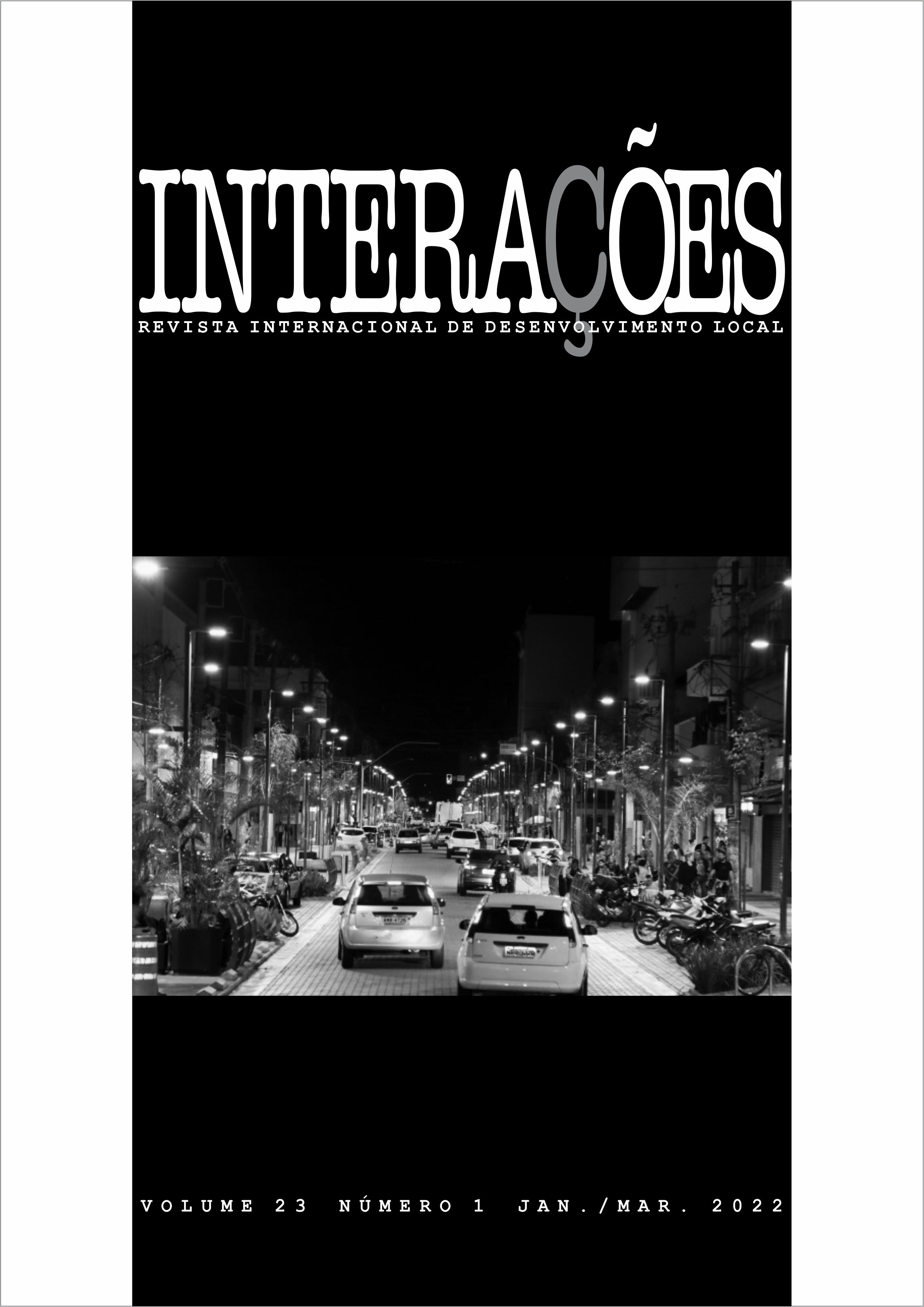“Indigenous people in Piauí: he hid to resist and appeared to exist!”: trajectory of the indigenous groups of the Tabajara ethnicity in Piauí
Keywords:
indigenous peoples, Tabajara, memory, political action, indianityAbstract
In the last four decades, in Brazil, a greater number of indigenous groups have come to declare themselves and claim recognition of their ethnic status and constitutional rights, in a phenomenon called the process of indianization and/or the strengthening of indianity. In Piauí, we highlight the groups of the Tabajara ethnic group that organize themselves through indigenous associations, inaugurating a new chapter in the indigenous history of Piauí, since, for a long time, the indigenous presence in the State was invisible, silenced, and denied. In this bulge, the present study sought to know the socio-historical conditions that contributed to the indianization process of the indigenous groups of the Tabajara ethnicity in Piauí. It is a qualitative research based on studies on the production of meaning in daily life. We conducted the study in the municipalities of Piripiri, PI, and Lagoa de São Francisco, PI, with 20 leaders, through the following methodological resources: observation in daily life, conversation in daily life, and semi-structured interview. In short, we observed that, in the face of the debris of the past, the Tabajara seek to write their history of the present, based on the historical rescue of their indigenous roots and the action of mediators, evoking and (re)signifying facts and events that are significant to them and that strengthen their indianities and their political action.
References
ARAÚJO, I. X.; SOUSA; V. S.; SOUZA, R. S. S.; LEITE, J. L.; ANDRADE, T. M.; SANTOS, R. L. A. Processo de emergência étnica: povo indígena Tabajara da Paraíba. In: CONGRESSO NORTE NORDESTE DE PESQUISA E INOVAÇÃO, 8., 2018. Anais [...]. Palmas: CONNEPI, 2012. p. 1-8.
ARRUTI, J. M. A. Mocambo: antropologia e história do processo de formação quilombola. Bauru: EDUSC, 2006.
BAPTISTA, G. Etno-história indígena piauiense. Teresina: EDUFPI, 1994.
CEARÁ (Estado). Secretaria do Desenvolvimento Agrário. Projeto de Desenvolvimento Rural Sustentável do Estado do Ceará – Projeto São José IV – marco conceitual dos Povos Indígenas (Versão Final). Fortaleza: SDA, 2019. Disponível em: https://www.sda.ce.gov.br/wp-content/uploads/sites/60/2019/02/MARCO-CONCEITUAL-DOS-POVOS-INDI%CC%81GENAS-1.pdf. Acesso em: 17 maio 2020.
CHAVES, J. O índio no solo piauiense. Teresina: Série Histórica, 1953.
DIAS, C. M. M.; SANTOS, P. S. História dos índios do Piauí. Teresina: EDUFPI, 2016.
HAMPATÉ BÂ, A. A tradição viva. In: KI-ZERBO, J. História geral da África: I – metodologia e pré-história da África. 2. ed. Brasília: UNESCO, 2010. p. 167-212.
HALBWACHS, M. A memória coletiva. São Paulo: Centauro, 2004.
KÓS, C. V. N. M. Etnias, fluxos e fronteiras: processo de emergência étnica dos Kariri no Piauí. 2015. 162 f. Dissertação (Mestrado em Antropologia) – Centro de Ciências Humanas e Letras, Universidade Federal do Piauí, Teresina, PI, 2015.
LIMA, C. L. S. Etnicidade indígena no contexto urbano: uma etnografia sobre os Kalabaça, Kariri, Potiguara, Tabajara e Tupinambá de Crateús. 2010. 272 f. Tese. (Doutorado em Antropologia) – Departamento de Sociologia e Antropologia, Universidade Federal de Pernambuco, Recife, PE, 2010.
MACHADO, P. As trilhas da morte. In: DIAS, C. M. M.; SANTOS, P. S. História dos índios do Piauí. 2. ed. Teresina: EDUFPI, 2016. p. 385-404.
MINAYO, M. C. S. O desafio do conhecimento. 11. ed. São Paulo: Hucitec, 2008.
MONTEIRO, J. M. Prefácio. In: ARRUTI, J. M. Mocambo: antropologia e história do processo de formação quilombola. Bauru: EDUSC, 2006. p. 19-23.
MOTT, L. R. B. Piauí colonial: população, economia e sociedade. Teresina: Projeto Petrônio Portela, 1985.
NUNES, O. Os índios fervilhavam como formigas às margens dos rios e vales do Piauí. In: NUNES, O. Pesquisa para a história do Piauí. Rio de Janeiro: Artenova, 1975. V. 1.
OLIVEIRA, J. P. F. Uma etnologia dos “índios misturados’? Situação colonial, territorialização e fluxos culturais. Mana, Rio de Janeiro, v. 4, n. 1, p. 47-77, 1998. DOI: https://doi.org/10.1590/S0104-93131998000100003
PIAUÍ (Estado). Secretaria do Planejamento do Estado do Piauí. Marco da Política para Povos Indígenas. Teresina: SEPLAN, 2018. Disponível em: http://www.seplan.pi.gov.br/marco.pdf. Acesso em: 17 maio 2020.
PORTO ALEGRE, M. S. Comissão das Borboletas: a ciência do Império entre o Ceará e a Corte (1856-1867). Fortaleza: Museu do Ceará, 2003.
POUTIGNAT, P.; STREIFF-FENART, J. Teorias da etnicidade. 1. ed. São Paulo: Fundação Editora UNESP, 1998.
SANTOS, C. J. F.; SANTOS, V. R. Decolonialidades indígenas. In: COSTA, F. A. C.; MESQUITA, M. R. (Org.). Psicologia política no Brasil e enfrentamentos a processos antidemocráticos. Maceió: Edufal, 2019. p. 231-43.
SPINK, M. J.; BRIGAGÃO, J.; NASCIMENTO, V.; CORDEIRO, M. (Org.). A produção de informação na pesquisa social – compartilhando ferramentas. Rio de Janeiro: Centro Edelstein, 2014.
VALLE, C. G. Apresentação – etnicidade e mediação como política e cultura. In: VALLE, C. G. (Org.). Etnicidade e mediação. São Paulo: Annablume Editora, 2015. p. 13- 61.
Downloads
Published
How to Cite
Issue
Section
License
Direitos Autorais para artigos publicados nesta revista são do autor, com direitos de primeira publicação para a revista. Em virtude de aparecerem nesta revista de acesso público, os artigos são de uso gratuito, com atribuições próprias, em aplicações educacionais e não-comerciais.


